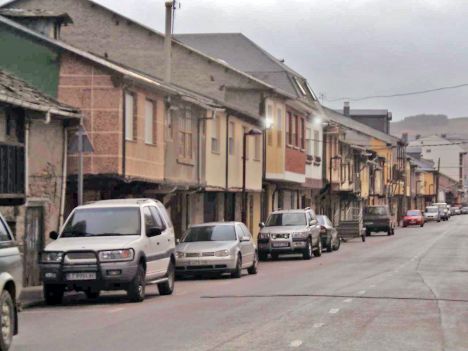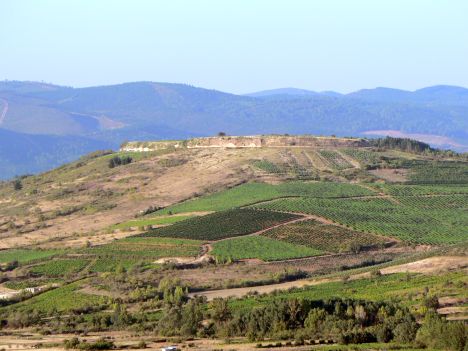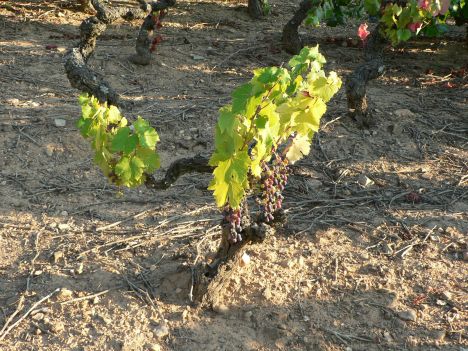The connection between Bierzo and me is a very special one. Even though it's not at all profitable to do business with this region in the very northwest of Castilla y León, I can't get it out of my mind. And it has been for more than a decade.
It was 1994 and Germany had once again failed to defend its title. Unbeatable for years to come, my ass! The landscapes blossomed only hesitantly, and I began to take an interest in winegrowing in Spain. The reason why I visited Bierzo, of all places, on my first trip has slipped my mind. Thirteen years later, the motto of the region has lost none of its relevance: "Bierzo is the region of the future". I encountered this sentence in almost every one of the 15 or so bodegas at the time, even if it was mostly just a helpless shout in the deep woods, given the qualities on offer. On reflection, it's not much different today. Whenever you think that the region finally seems to have arrived at its own future, there is a little push and Bierzo is allowed to start all over again.
 |
| Typical Bercian house shape in Cacabelos% the seat of the Consejo Regulador D.O. Bierzo |
The small enclave, which is certainly no longer Castilian, but also not really Galician, has a lot to offer. All those with whom I travelled to the region were enthusiastic about the landscape, the simple but traditional and tasty dishes, the openness of the people.
In its recent history, Bierzo has done just about everything wrong that could be done wrong, not only as a wine region, but also in terms of tourism. Fact: Bierzo was one of the cultural centers of the Romans on the Iberian Peninsula. The gold-mining sites in Las Medulas, Castro Ventos, Bergidum Fluvium, the whole Bercian soul is based on the glorious times of the Romans, who for once behaved in a civilized manner here. When the Visigoths and the Vandals ruled the region, it quickly sank into insignificance. And during the long feud between the Moors and the Kingdom of Aragon, Bierzo was not of central importance either.
However, this changed abruptly when the Way of Saint James attracted people from all over Europe, as pilgrims struggled along the dusty paths from Navarre to Galicia. The Way of Saint James has made the region a bit of a household name. But who knows that it was the second most important spot on the whole route, after Santiago de Compostela? Because it was here that the old and infirm, those weakened by the long journey, could receive absolution, if they made it to the place on the banks of the Burbia where today a statue of Saint James points the way to Galicia. "Even if your heart is set on the region, set out, wander, towards Galicia." So it is written, although it is not clear whether the heart is attached whether to the landscape, the people, the wonderfully aromatic peppers, the massive botillo, the spicy aguadiente or the Bercian wine.
 |
| The "sacred" mountain of Bierzos. Here stood the camp of the Romans% the soul of Bierzos |
One thing is clear: if it hangs anywhere, it's in Villafranca de Bierzo, in this lively town that nestles almost shyly against the mighty mountains that shield Bierzo from Galicia. Whether you stroll down the Calle de Agua at four in the afternoon or three at night, it always presents itself impressively. Not pompous, we are talking about a town of 2,000 inhabitants, rather full of understated elegance. Villafranca was shaped by the monks from Cluny. They built a monastery, a hospital, a hospice, plus schools and other buildings. And they brought wine to Bierzo. According to legends, it was the same variety that is now called Cabernet Franc. This has not been proven. And even if the roots are the same, 700 years in a completely different environment does make a difference.
Bierzo is more or less a single-variety world. In the vineyards of the basin-like formation with just 380 meters of altitude at the bottom of the Sil, but mountains that rise up to 1,500 meters, stands the Mencía variety, curse and blessing of the region. Mencía is different, not at all Spanish, but somehow French, which feeds the Cabernet thesis. However, it is above all the geological situation as well as the actions of the people that determine the characteristics of Mencía.
A good 4,000 hectares of vineyards can be found in Bierzo. Since the region did not have to pay tribute to grain cultivation during the dictatorship, old vines are not uncommon. Roughly estimated, two thirds of all vines are more than 60 years old. At the beginning, this thrilled me. Today, however, I am rather doubtful. While elsewhere in Galicia good results are achieved with small-berried clones, in Bierzo there has hardly been any further development in terms of grape variety for decades. The biggest problem, however, is the real division in the succession. Nowhere in the whole of Spain is there such small-scale viticulture. Even if the people who greet you with the saying "Welcome to the Burgundy of Spain" rather have the landscape in mind - which, however, has nothing in common with Burgundy, but rather with the Allgäu - the mini-parcels are in fact the really comparable of both regions.
 |
| Old vines are by far not always a blessing |
Viñademoya, one of the good vineyards, which is even excellent in its core because it is based on slate, has at best seven hectares, but far more than 100 different plots. The situation of bodegas like Luzdivina Amigo is not that rare: they have no less than six different plots in the vineyard, none is wider than four rows. And no one has wanted to sell yet, though this is already starting to change. Because the many small winegrowers who sell their grapes to ever-greedy cooperatives or large commercial wineries in Bierzo or else in Galicia get just 30 pesetas for the kilo of grapes. Here, as in many regions of Spain, the euro has arrived in the wallets - but not in the heads. 30 pesetas, that's just 18 cents, for manual work, because the slopes hardly allow for mechanical work. The change of generations is often the time that puts an end to unprofitable work. The young people hardly ever move away, industry, handicraft, fruit growing or even tourism offer good job opportunities, but they don't want to toil so hard for the little money. And the euphoria of the bodega foundings has long since faded away
To the second part: "Bierzo - Rey muerto, rey puesto."
To the third part: "Bierzo - Between cask wine and two casks of wine"